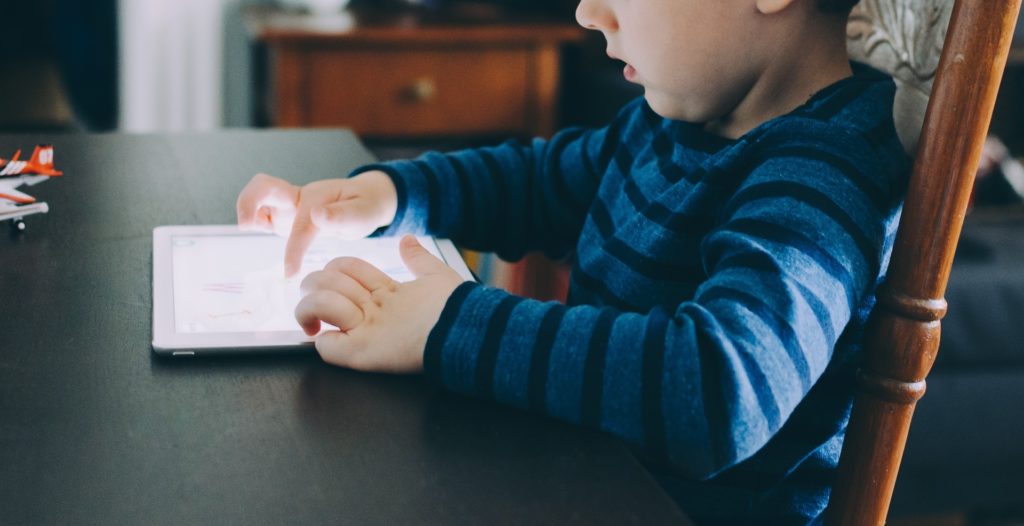By: Andrew Sauer, M.D., J.D., F.A.A.P. and Chris Dix
It’s nearly impossible to totally escape screens in today’s tech-driven society. More than half of U.S. children own a smartphone by the age of 11 and 84% of teens have their own phones.
But what does all of this screen time mean for a young, developing brain?
Medical evidence for the threat of screen time
The effects of screen time on children’s brains has been studied diagnostically by examining imaging, as well as through cognitive testing.
In a recent study published in JAMA Pediatrics, MRIs revealed that preschoolers who used screens more than the recommended one hour per day had lower structural integrity of white matter tracts in parts of the brain that support language and other emergent literacy skills.
This is just one of a number of studies in the medical literature that highlight the potential negative impacts of excessive screen time. Other common impacts include:
- Attention issues
- Depression
- Learning development
- Obesity
- Sleep quality
But is all screen time bad?
The right kind of screen time
Screen time can be productive if done properly and if limits are set. Co-viewing and interactive screen time with your child can be beneficial, whether that’s reading an e-book, performing an educational activity or playing an interactive game together.
When it comes to video games, children will often want to show you how to play. Giving them this role as a teacher can foster their confidence and self-esteem, and it makes this screen time an opportunity to be interactive, meaningful time spent with your child.
Face-to-face communication is also vital to childhood social development, and apps such as Skype and FaceTime can allow children to have interactions with loved ones who may not live nearby. This type of screen time can be beneficial and is set apart from what we traditionally think of as “negative” device use.
Red flags: What warning signs should parents look for?
How do you know if too much screen time is a problem for your child? The obvious indicator is how much quantifiable time they’re actually spending in front of screens. Tools today make it easy to track, monitor and control this time on your child’s device(s).
If a child is immersed in their tablet or phone for long periods of time, particularly to the point of excluding other activities in their life, that’s a definite red flag. Likewise, be aware if activities on the screen are constantly invading other parts of their life such as when they’re eating dinner, doing homework, etc.
Many of these apps and games are addictive. They’re similar to gambling games and devices in that they offer immediate gratification and reinforcement, allowing these interactions to become a vicious cycle.
What can parents do to keep their kids safe?
One of the most effective things parents can do is set limits on their children’s screen time, both in terms of time and content. The “screen time” feature on Apple devices and apps such as unGlue allow you to objectively measure screen time and set constraints. The earlier these boundaries are established in your child’s life, the easier it is.
Here are screen time recommendations from the American Academy of Pediatrics (AAP):
- 18-24 months: Avoid digital media, with the exception of video chatting
- 2-5 years old: Maximum 1 hour a day of high-quality programming and co-viewing
- 6 and older: As child gets older and demonstrates responsible device use, set appropriate limits and boundaries using tools like those mentioned above
It’s also important to limit the amount of screen time your children have alone. Devices shouldn’t be treated as stand-in babysitters or “emotional pacifiers.” The best screen time is interactive and shared between child and parent.
The AAP also recommends not having devices around at bedtime, since that’s a period when a child is frequently by themselves for an extended period of time and limits may not be enforced. Plus, there is the secondary negative effect of a screen’s “blue light,” which suppresses the production of melatonin and decreases a user’s quantity and quality of sleep. Any use of screens should stop one hour before bedtime.
Of course, there’s also the obvious threat of exposure to unsafe, inappropriate content online, as well as websites that can solicit children’s personal information. Many parental guidance tools today offer both controls on the amount of screen time as well as filters on the type of content allowed on devices.
For more information, visit the AAP’s website, which also offers a helpful Family Media Use Plan to help you and your children balance their online and offline lives.
Note: This article was based on an episode of “The PG Podcast” with Chris Dix. Listen to the episode here or wherever you get your podcasts.
The information provided in this article is for general informational purposes only. It does not, and is not intended to, constitute legal advice. Readers should contact an attorney to obtain advice with respect to any particular legal matter.
Follow us on for more content updates
for more content updates

